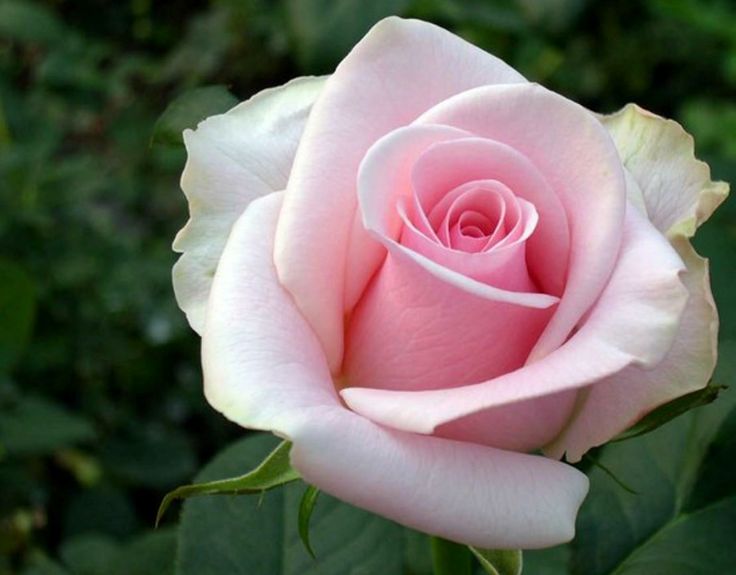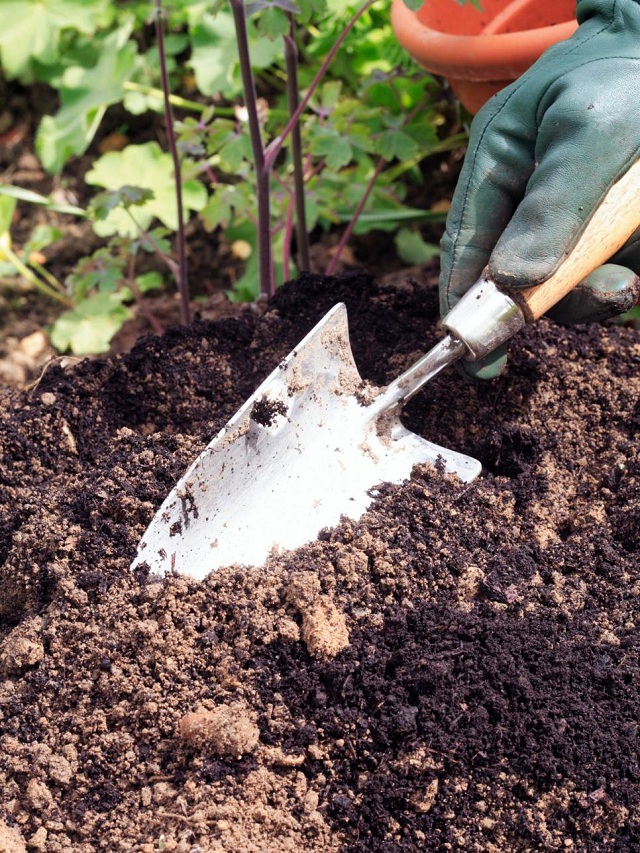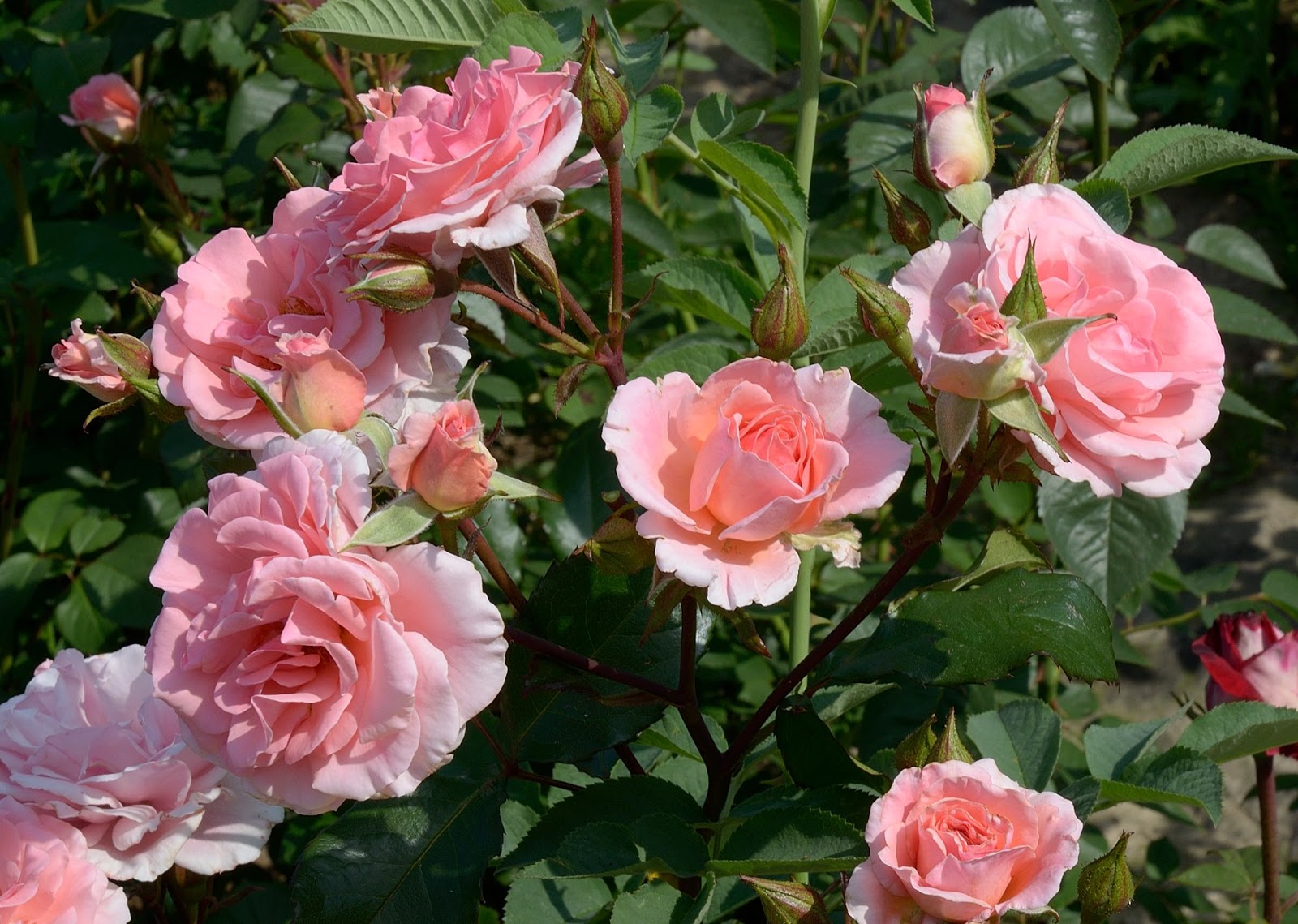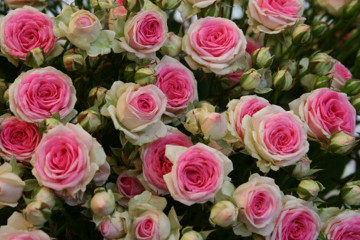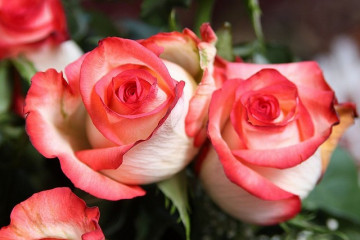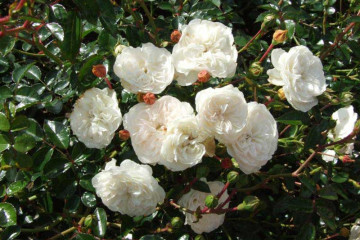Rose Titanic (Titanic) - characteristics of the Dutch variety
Content:
The Titanic rose is an unusually beautiful flower, but with its own whims. The article provides a detailed description of the plant, its history of origin, stages of cultivation and reproduction.
Rose Titanic (Titanic) - what is this variety
The variety belongs to the type of hybrid tea roses. Bred by a Dutch company on a flower farm. Due to its large size, it was named Titanic in honor of the first giant ship.
Rose, variety Titanic - double flower. There are 17-36 mother-of-pearl petals in a 14-centimeter wine-glass-like bud. The color can be cream, pink-beige, pale pink. An upright bush, 105-128 cm high, up to 65 cm wide. The foliage is emerald green, there are rare thorns on the stem.
Advantages and disadvantages of the variety
Pros:
- rich in medicinal properties;
- few thorns;
- long stay in the cut;
- pleasant aroma;
- adjacent to other plant species is permissible;
- resistance to frost and disease.
Minuses:
- intolerance to the scorching sun;
- demanding for care and cultivation.
Growing a flower
In what form is the landing made:
- seeds. The process is long and laborious, it is not always possible to get a hybrid;
- specially prepared seedlings;
- a young or adult bush.
What time is boarding? This is best done in March - May or September - October.
The best place to plant is sunny, protected from frequent drafts. Moves proximity to other bushes.
The soil for hybrid tea roses should be loose and slightly acidic. The application of fertilizers will help to achieve concentration: manure, peat, compost, etc.
The planting material is cleaned of soil and soaked in water for 2 hours.
Planting procedure step by step:
- A maximum of eight bushes are planted in holes 30-50 cm deep at a distance of at least 50 cm.
- The planting material is sprayed with a solution of a manure mixture: clay + manure + water (2: 1: 1). This will prevent the liquid from retaining on the root during watering.
- It is placed in the hole with a grafted place in the ground, followed by a roller from the soil.
- The pit is earthed up to 15 cm and watered thoroughly.
Plant care
In caring for a rose, you should consider some rules.
High humidity is unacceptable. In the first month after planting, watered every 4 days. Then once a week.
To keep the soil in a comfortable state, it must be fertilized 2-4 times a month. Usually a slurry mixture is used. It is placed in grooves around the bush (20-25 cm from the roots), covered with peat, sand and earth. After a day, the soil must be loosened.
Pruning occurs in the first half of summer, late fall and early spring. The plant is transplanted in March or October.
By winter, the bush is insulated with spruce branches, and the stems are covered with peat or soil if the temperature drops below -22 ° C.
Blooming rose
High activity is observed in spring, in summer until mid-autumn. In winter, a period of dormancy begins.
During flowering, the bushes are fed with complex fertilizers containing saltpeter and potassium. During watering, make sure that no liquid gets on the leaves and buds. After flowering, they are fed with nitrogen-containing fertilizers.
What if it doesn't bloom? Possible causes and solutions:
| The reasons | Decision |
| Lack of nutrients | Top dressing |
| Excess sunlight | Shade in the afternoon |
| Excess moisture | Drainage |
| Pests and diseases | Spraying |
| Insufficient lighting | Transplant, additional lighting |
| Hot and dry weather | Increased watering |
| Wet and cold weather, drafts | Build a protective frame with a canopy |
Flower propagation
Reproduction takes place in winter and summer. An acceptable method is artificial breeding. For competent budding, you need a stock. It is grown from rose hips, after which a small part of the stem is grown, separated from the root.
Diseases, pests and ways to control them
The plant is resistant to pests and diseases, but in some cases it can be harmed by:
- insects - treatment with acrophyte, maxi cofidor, mospilan;
- black spot - topaz or sulfur solution;
- infectious burn - spraying with foundation, copper oxychloride;
- rust - juniper transplant;
- soot - soap-alcohol solution.
Thus, the Titanic rose is considered a decoration of any garden. The seedlings are adapted for growing on a plot or in a greenhouse. In the second case, they will bloom all year round. The main thing is to provide the required care.
